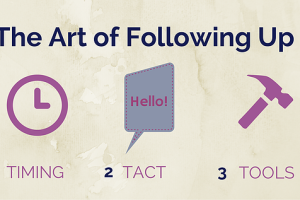What key business skill did the late Steve Jobs and the folk legend Scheherazade have in common? GREAT storytelling ability.
Applying the same cunning with which the Persian queen persuaded a jealous king to spare her life, the Apple visionary won over thousands of users, captivating them with his version of a better future, leaving them practically drooling in anticipation of his next big product announcement.
A Lost Art in Business
Perhaps we’re unaccustomed to thinking of great business leaders this way. We call them marketing strategists, solutions engineers, even social pioneers; but rarely do we label them storytellers.
That’s a shame, because refined storytelling ability ranks among a salespersons most valuable assets. The fact is – storytellers have a better sense of the customer and are better able to connect with the customer’s emotions about purchasing.
This is an especially important observation because humans don’t always make rational decisions. And it’s ironic because most people care about the things that touch, move, and inspire them. Salespeople know how to connect with users’ needs and develop solutions to their problems, but if they aren’t also out to inspire their customers and move them to action, then they aren’t out to make much money either.
Whether you’re courting prospective customers or pitching to a group of potential investors, you want to arm yourself with more than an intellectually persuasive case. Sure, you need to have your facts and figures lined up to answer the hard questions, and you need to demonstrate superior command of the technical and logistical details involved in your product delivery; but above and beyond all that, you need to make a lasting emotional impact upon your audience in order to hold their attention and motivate them to act.
Stories are considerably more powerful than a laundry list of impressive bullet points during a PowerPoint presentation. Because they activate both sides of the brain—the logical and the emotional—stories affect audiences at a far more visceral level than arguments and statistics do. They humanize the storyteller while engaging and sustaining the audience’s attention. They create memorable impressions that travel further because they are more easily recalled and more accurately recounted after the fact (a particularly salient point for those pitching to an audience who will subsequently attempt to sell the idea to their superiors).
But, perhaps most importantly, stories have a way of inviting the audience to internalize the information and make it their own—to see themselves as participants in the story, with a genuine investment in the outcome.
The overwhelming thrust of these considerations is that people would rather listen to a compelling story than a canned sales pitch, and they’re way more likely to act on an emotional appeal than an intellectual presentation. That’s why great storytellers make great salespeople: they captivate customers, effectively communicate product value, and inspire them to buy.
Choosing the Right Story for the Occasion
Take note: Start developing a “minimum inventory” of three stories: one that describes the companies you represent, one that discusses your previous success with another customer, and one that paints a personal picture of yourself—including flaws and vulnerabilities and how you overcame them.
This is a good starting framework for entrepreneurs too… We need stories that cast a vision for the kind of company and market culture we’re looking to establish. We may or may not have previous client successes to talk about, but we at least need stories that help others understand our burden for bringing a particular solution to market in the first place. And since we’re in the unique position of trying to sell ourselves alongside our product ideas, we always need fresh new stories that illustrate our core values, our personalities, and our perseverance in the face of obstacles.
Storytellers need a diverse inventory of anecdotes because storytelling is not a one-size-fits-all exercise. Nor does storytelling substitute for the “hard skills” of entrepreneurship—things like market analysis, product development, personnel training, etc. (Stories must have substance, after all!)
But it’s vitally important for business-people to be able to recognize where and how an artfully placed and skillfully delivered story can make the difference between leaving an audience yawning and leaving with them energized to act.
Let’s take a look at some broad categories of stories that you’re likely to find useful in your sales pitches and business networking:
Stories to connect.
These are the kinds of anecdotes that let your audience see who you really are and better understand why you’re in front of them. They help disarm skepticism and position you as a sympathetic human being interested in solving others’ problems. If you’re pitching before a rural chamber of commerce, for instance, a story about growing up in a small town might win identity points and lend credence to your understanding of prospective customers’ needs.
If you’re talking with a lead who has experienced negative customer service from a previous organization, you might inject a story about a time you were equally frustrated when a supplier let you down. Or perhaps you just need to break the ice, and a humorous story about your experiences arriving in town that morning could set the room at ease.
The idea is to invite your audience to see you as someone they can trust—an approachable, down-to-earth individual they can relate to.
Stories to educate.
Sometimes explanatory facts and figures only go so far. When your audience’s eyes begin to glaze over from information overload, often it helps to drive your point home with a real-life example of that data in action. When touting your customer service statistics, make sure you talk about that time one of your associates turned a grumbling customer into one of your biggest accounts.
If a customer inquires into the scalability of your solution, describe how you’ve already overcome implementation obstacles with similar clients. Help your audience appreciate the value of your product by describing your personal experience with the problem you’re out to solve.
The goal is to demonstrate competence and get your audience on the same page about what you have to offer.
Stories to inspire.
This is the “meat and potatoes” of your storytelling. Once you’ve built an intellectually compelling case for yourself, it’s time to share experiences that will tap into the emotional energy of the room and drive them to respond to your call to action.
You might cast a vision of the firm’s future after your solution is implemented, or you might tell the story of a similar client who has become a major player in its industry subsequent to their partnership with you. You might wax philosophical, telling the stories of individual people whose lives will be transformed for the better as a result of your company’s offering—or better still, tell about the sympathetic person you already know whose life could be different if you managed to achieve your vision.
Success at this point is all about getting someone who’s still on the fence about your idea to take ownership of the solution and act on it.
Tips for Becoming a Better Storyteller
No matter what your present level of storytelling ability may be, you can always stand to improve. But for those who are new to this whole idea of using storytelling as a business development technique, here are a few suggestions for getting started:
Begin collecting story fragments.
Storytellers are sponges. They soak up bits and pieces of anecdotal drama taking place around them and file them away—sometimes literally—for future use in crafting appropriate tales as the need arises. They also surround themselves with other successful storytellers, appraising their deliveries and appropriating for themselves any technique that elicits results.
Master the art of the arc.
All great stories involve drama, because conflict is the engine that drives a compelling tale. Good storytellers pay close attention to seemingly everyday occurrences, making note of the dramatic elements. When it comes time to share one these anecdotes with an audience, they leverage the drama for maximum effect—setting the stage with appropriately-paced exposition, creating suspense by introducing conflict, then inspiring hope as they describe a satisfying resolution.
The key ingredient to a successful story is a likeable hero who encounters roadblocks and emerges transformed. You should apply this when casting a vision of a customer’s future after you come into the picture: the client is the likeable hero who encounters daily roadblocks such as lost productivity and inefficient work-flow, but after implementing your solution, the client solves a number of his most vexing problems and discovers new avenues of profitability.
Be entertaining.
People respond far more positively to your ideas when they enjoy listening to your presentation. Stories are already inherently more enjoyable than factual monologues, but great storytellers recognize that the manner in which stories are told makes all the difference. An audience wants to be placed at ease by the storyteller’s sense of congeniality. Even top executives want permission to laugh, appreciating that the storyteller has a sense of humor to go along with his business acumen.
You may not be a professional entertainer, but if you want to be the kind of business leader that others are talking about after your presentation is over, then you want to at least make sure your stories are rich with detail, livened up with a healthy dose of humor, and delivered with a measure of dramatic flair.
Practice, practice, practice.
Storytelling is both an art and a craft. Part of storytellers’ success lies in their intuitive ability to read an audience and optimize their delivery accordingly. But the lion’s share of storytelling skill is earned through diligence.
Great storytellers rehearse beforehand, testing their anecdotes on others to gauge whether they’re speaking too quickly or not quickly enough, whether their humor elicits appropriate laughter or falls dead, and whether they have sufficient command of their material to maintain eye contact and effectively connect with their audience.
Now whichever story you pull out of your hat… be sure to practice!








